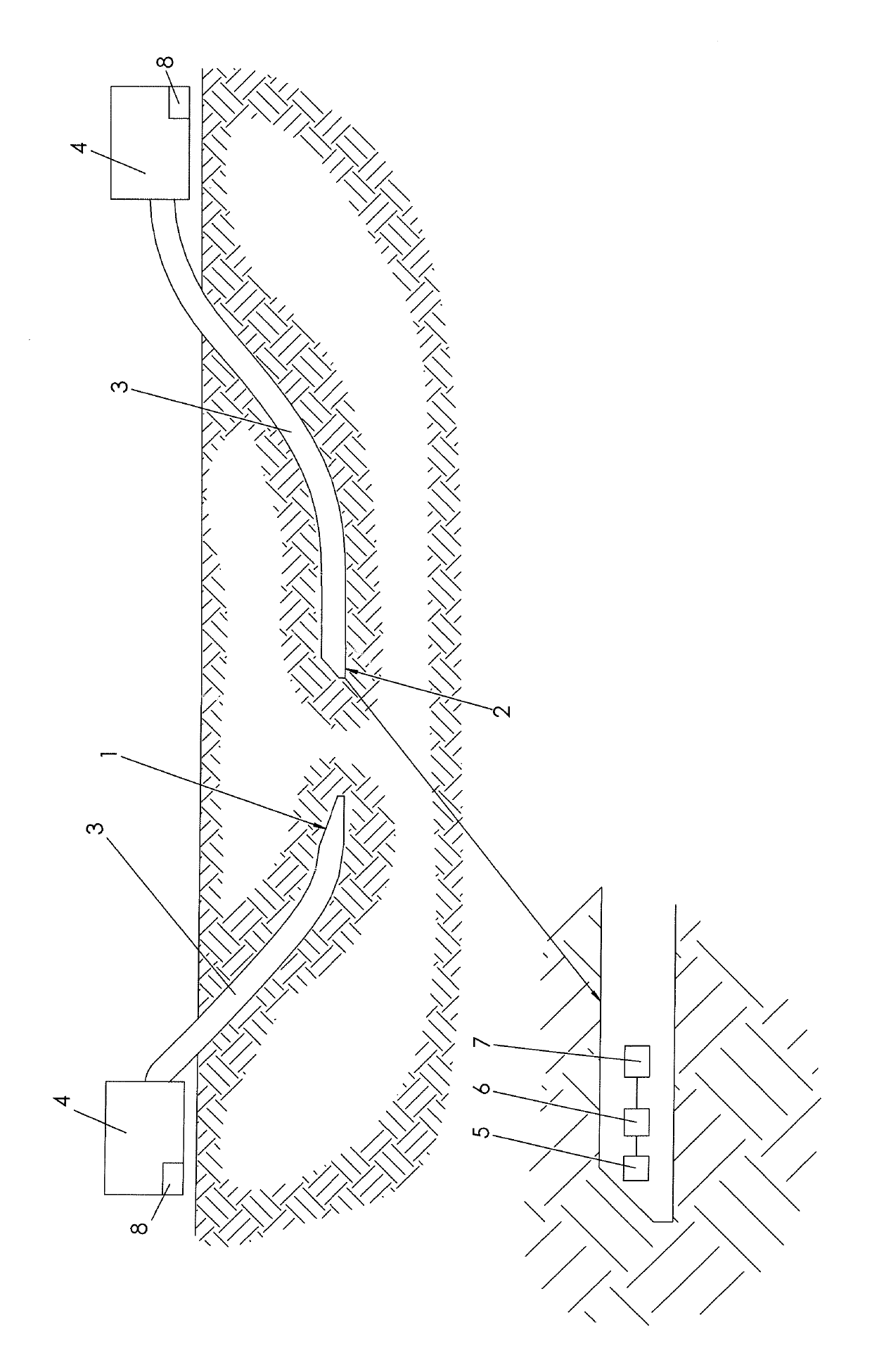Method for introducing a borehole into the soil and soil drilling device and use thereof
a drilling device and soil technology, applied in the direction of borehole/well accessories, directional drilling, survey, etc., can solve the problems of time-consuming and expensive convergence boring, inability to insert pipes into the resulting borehole, and limited “accuracy” of achieving convergence boring, etc., to achieve easy detection, low cost, and soil loose
- Summary
- Abstract
- Description
- Claims
- Application Information
AI Technical Summary
Benefits of technology
Problems solved by technology
Method used
Image
Examples
Embodiment Construction
[0023]FIG. 1 shows an introduction of a borehole into the soil by means of two drill heads 1, 2. The drill heads 1, 2 are connected to a drill pipe 3 or drill string, which consists of a plurality of drill pipe lengths connected to one another. The drill pipe lengths are connected to one another along the course of the bore. The drill heads 1, 2 are advanced and (temporarily) rotatively driven by means of the drill pipe 3 of a driving device 4 arranged on the earth's surface. The rotary driving on the one hand serves to improve the advancement of the drill heads 1, 2 in the soil and on the other hand a control function is thereby achieved in conjunction with the formation of at least one of the two drill heads 1, 2 as a slanted drill head. When the drill head 1, 2 designed as a slanted drill head is advanced through the soil, the slanted surface of the drill head 1, 2 creates a deflection, the effect of which is offset across a full rotation of the drill head 1, 2. If the drill head...
PUM
 Login to View More
Login to View More Abstract
Description
Claims
Application Information
 Login to View More
Login to View More - R&D
- Intellectual Property
- Life Sciences
- Materials
- Tech Scout
- Unparalleled Data Quality
- Higher Quality Content
- 60% Fewer Hallucinations
Browse by: Latest US Patents, China's latest patents, Technical Efficacy Thesaurus, Application Domain, Technology Topic, Popular Technical Reports.
© 2025 PatSnap. All rights reserved.Legal|Privacy policy|Modern Slavery Act Transparency Statement|Sitemap|About US| Contact US: help@patsnap.com

